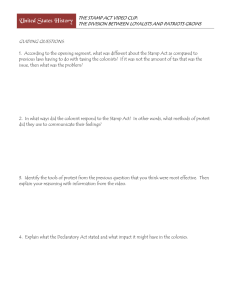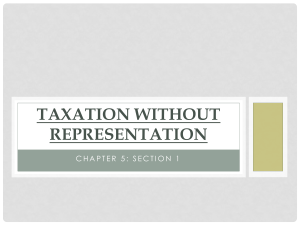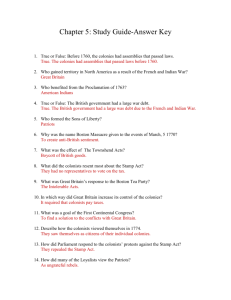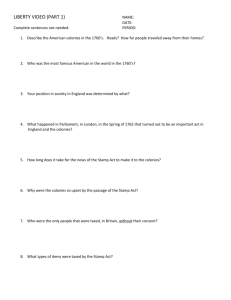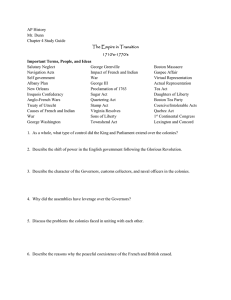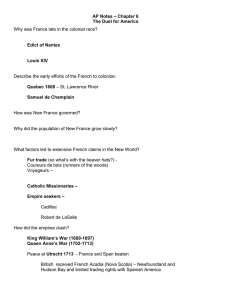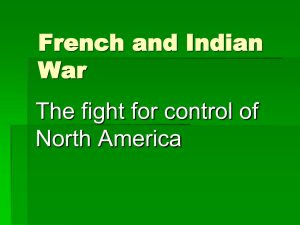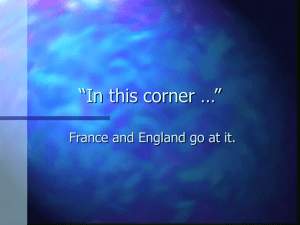French and Indian War PPT
advertisement
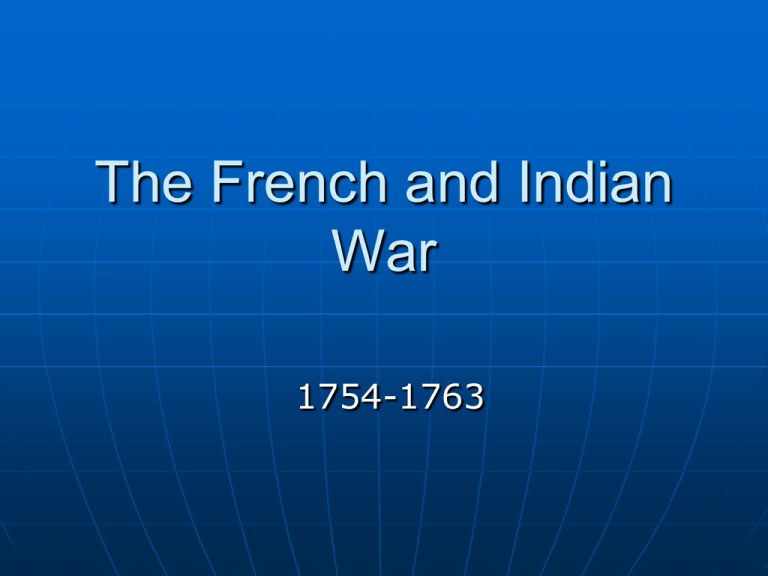
The French and Indian War 1754-1763 Scramble for Territory Rivalry among European Nations for Control of N. America began early English built settlements along eastern seacoast during 1600s French explored farther inland, claimed territory to the Rocky Mtns Conflict erupted due to overlapping claims 1650 1750 Boundaries of Colonial Expansion War Begins In 1754, English colonists of Virginia attempted to take a French Fort (Fort Duquesne) at the forks of the Ohio River Led by a young Major George Washington Thus began the French and Indian War French and Indian allies fought against the British and American Colonists Colonies Unify to Fight a Common Enemy June, 1754, delegates from several English colonies met in Albany, N.Y. Attempted to work out unified war effort in northern colonies Ben Franklin, a Pennsylvania delegate, offered a plan for permanent union of the colonies • Albany Plan of Union • Grand council of delegates from each colony • Ultimately rejected, but served as model for the later govt. of the U.S. British Turn the Tide of War War initially goes poorly for British 1758, French retreat into New France Iroquois decide that French cause is hopeless, shift sides 1759, British invade New France and capture Quebec Treaty of Paris - 1763 Ended the French and Indian War France gave New France East of Mississippi River to Britain France gave New France West of Mississippi River to Spain British returned Cuba in exchange for Florida Despite Victory, Relations are Strained British thought colonists did not provide enough support War was long and costly Britain had fought to protect them Colonists shocked by the weakness of British military tactics British would not allow colonial officers to lead their troops French no longer held territory west of the Appalachians Tensions with Native Americans After war, increased interest in Great Lakes region and Ohio River valley Alarmed natives rebelled in 1763 (Pontiac’s Rebellion) To help restore peace, George III issued Proclamation of 1763 • Closed area west of Appalachians • Placed under control of British military Sugar Act Britain acquired huge debts during war Sugar Act 1764 – marked start of a new British policy designed to raise $ Parliament issued new rules to enforce the act • Smuggling cases tried in Britain • By a judge, not a jury • Judges received commissions on illegal cargoes and fines Quartering Act 1765, colonies required to provide housing and supplies for the British troops who remained Some complained, but most went along with it Stamp Act Crisis Stamp Act (March, 1765) – tax on newspapers, legal documents, most printed materials Official govt. stamp had to appear on these materials to show tax was paid 1st tax that was clearly intended to raise $ w/ no regulation of trade Stamp Act Crisis In October, delegates from 9 colonies met as Stamp Act Congress Main organizer was James Otis • “No taxation w/out representation” • Sent petitions/letters to King/Parliament Merchants boycotted British goods British merchants angered Groups (Sons/Daughters of Liberty) No one to sell stamps in America 1766-Parliament repealed Stamp Act
